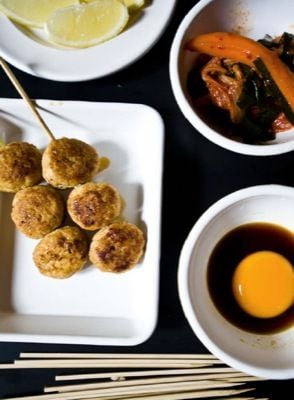We sit down with the chef/owner of the new yakitori restaurant to discuss chickens, Masa and what’s so different about his new restaurant
Yardbird, the new yakitori restaurant on Bridges Street that specialises in chicken, has generated a lot of buzz for a restaurant that has been open for less than three weeks and seats only 40 people. We stop in one sunny afternoon just before dinner service to chat with Matt Abergel, the chef and owner of Yardbird, to see what the fuss is all about.

Asia Tatler Dining: Tell us a little bit about yourself: how did you get started as a chef?
Matt Abergel: I started cooking when I was 15 and learned cooking on the job. Traditionally cooking is an apprenticeship, it's a craft and that's the difference in that now it's looked at as a profession and as something modern. That's sad, I got into because it is a craft. All the equipment I use is just a tool, I don't look at myself as an artist or genius. You can see the food that I cook is very simple: I try to make tasty and simple things.
ATD: It's not that common to see a white chef in a Japanese restaurant. What is it about Japanese cuisine that draws you?
MA: The Japanese care about craft, it's very much about getting better at one thing and focusing on it. It's not about the chef, it's about the food and ingredients. Also all the Japanese chefs I've ever worked with were always very giving with knowledge. They want to show you everything, they want you to do it just the same as they could. And that allowed me to excel faster than I could have excelled in another environment.
ATD: You worked at the legendary Masa in NYC: what experience did you gain that is now helping you at Yardbird?
MA: Masa is the formative time of my career. I was there for almost four years and that was where I learned to do things as perfectly as possible and also not touching things too much, not overdoing anything and just being proud of the ingredients. Even though Masa is one of the most expensive restaurants in the world, there are still a lot of things that we never touched. We were just the middlemen with this beautiful fish, cutting it and serving it at the right temperature, making sure that it's presented properly.



